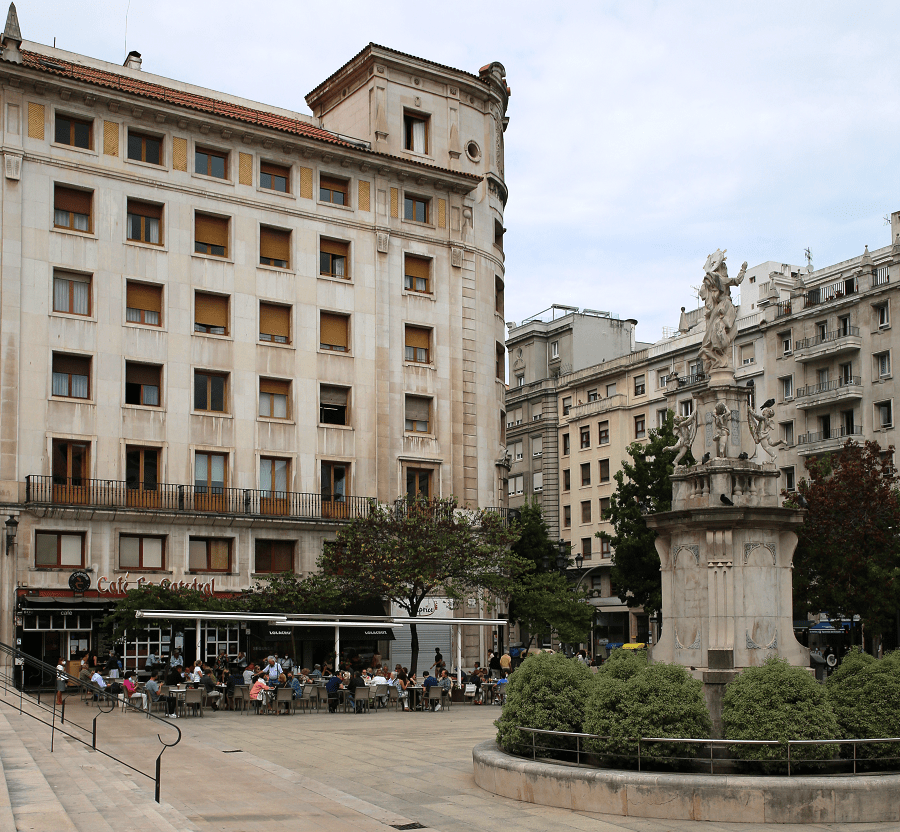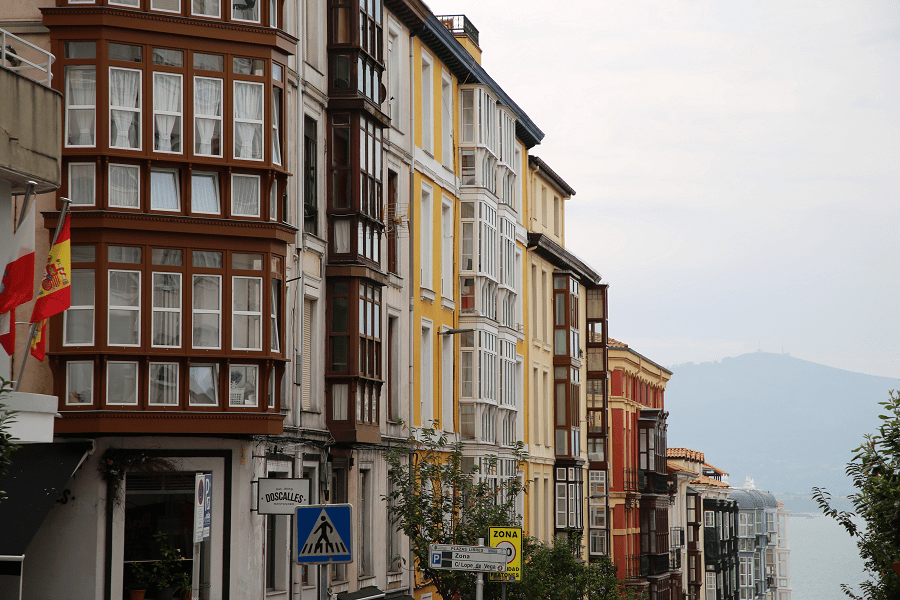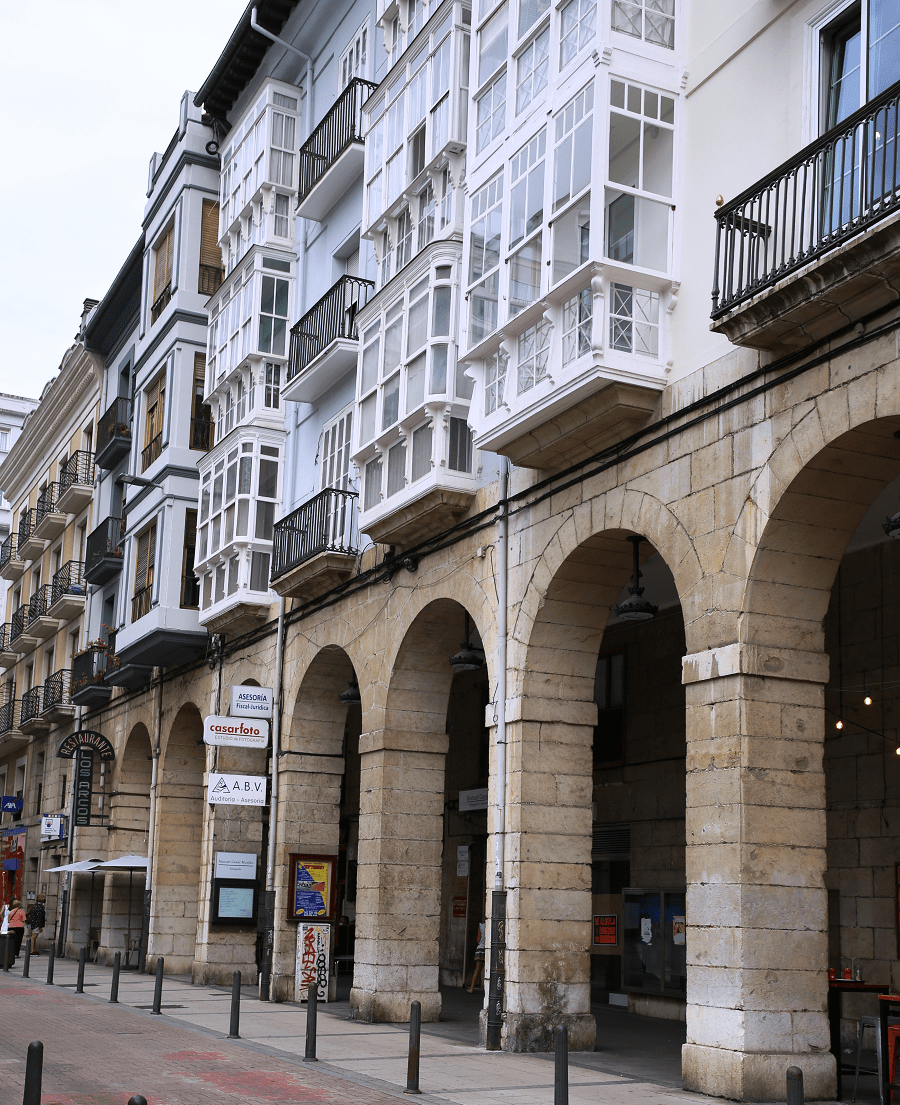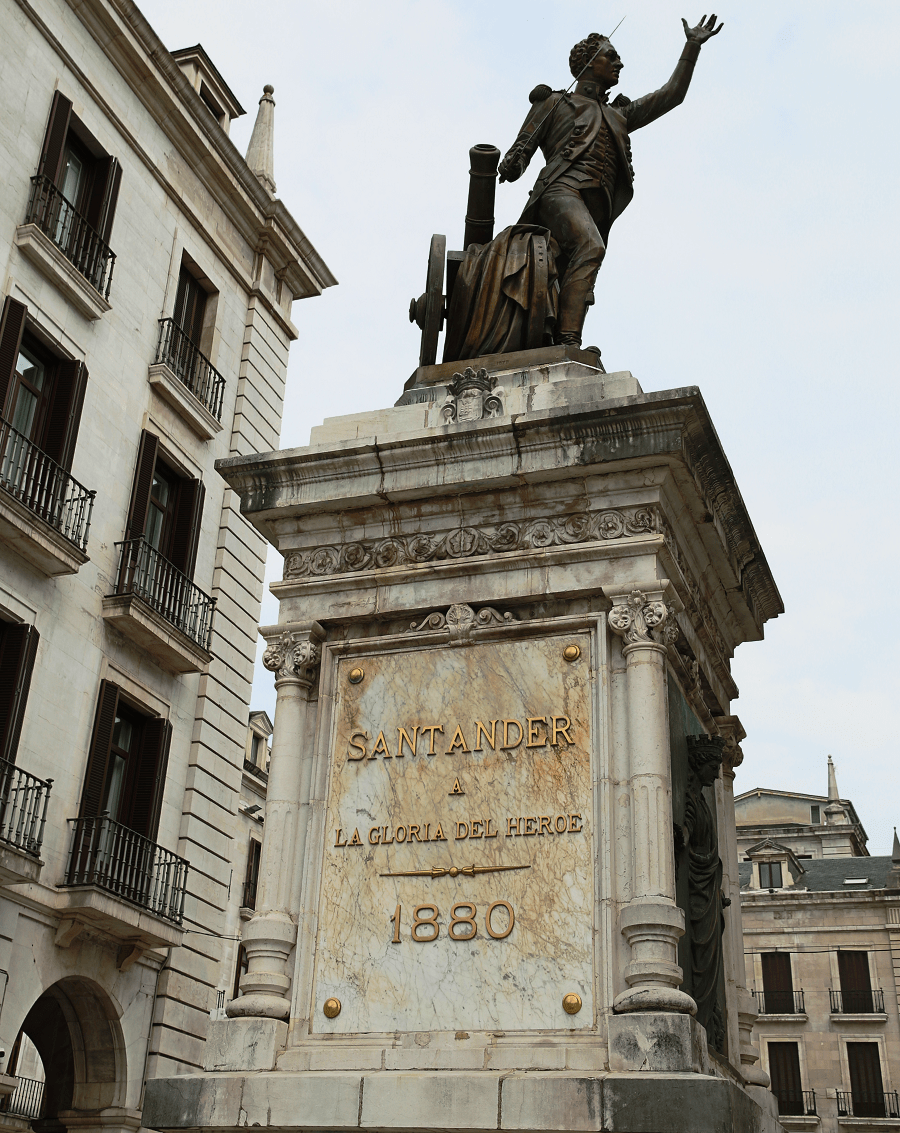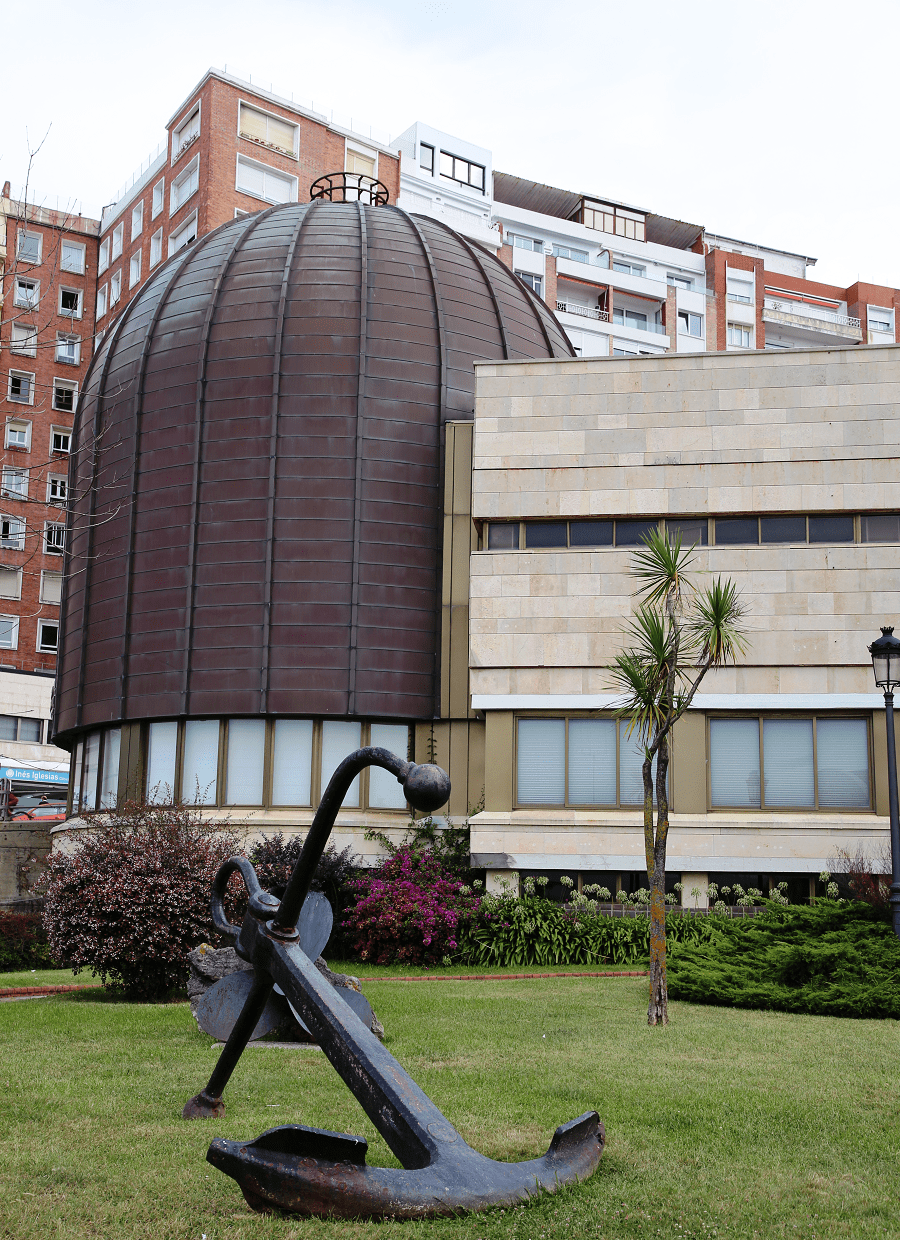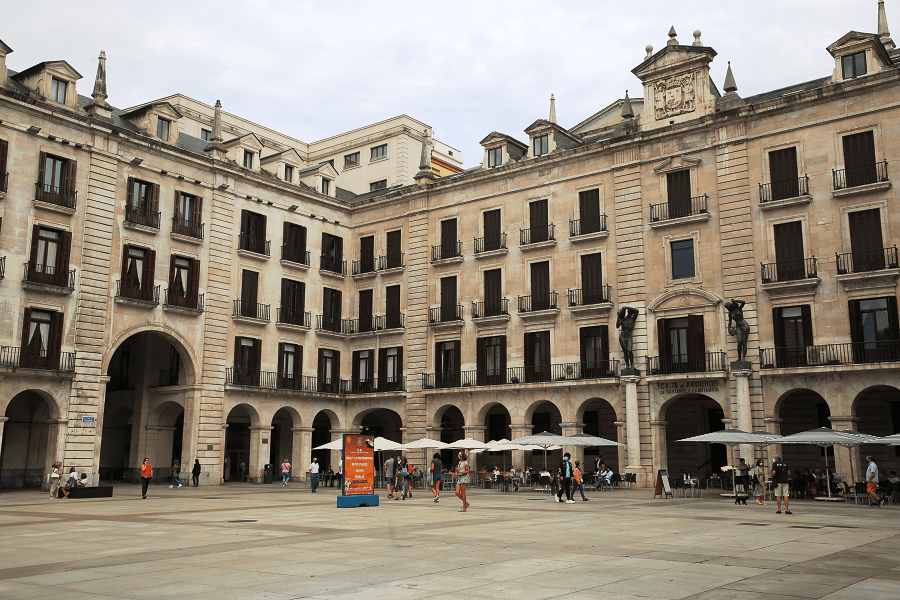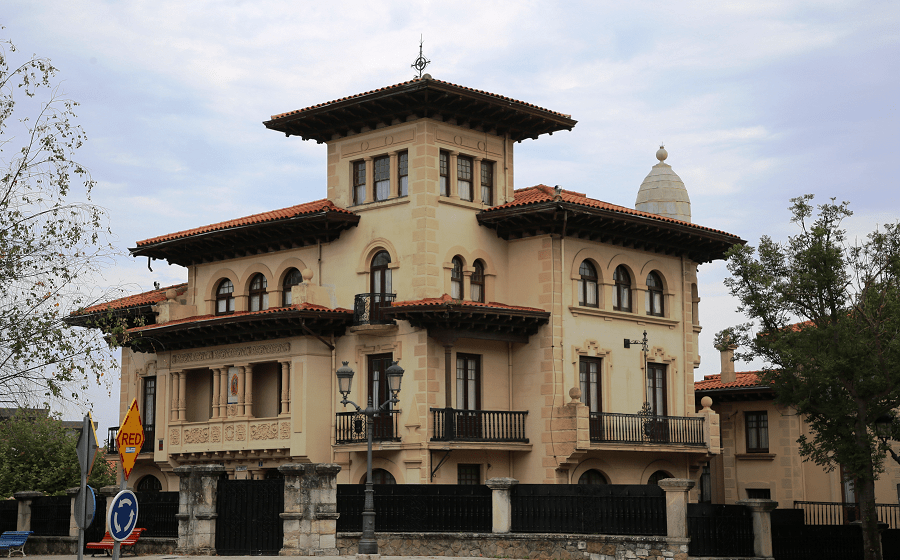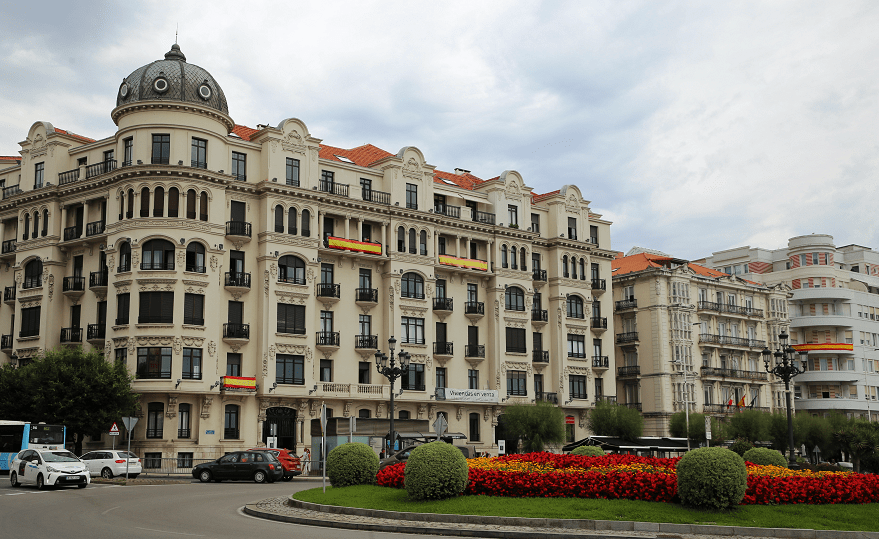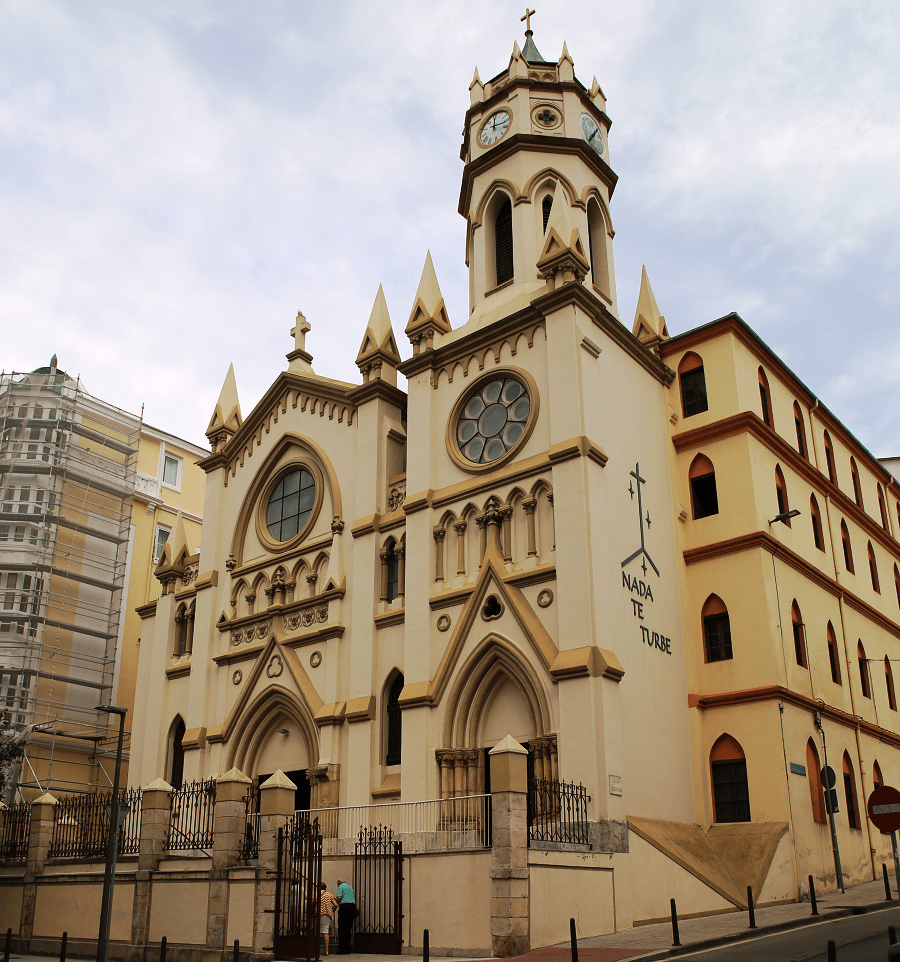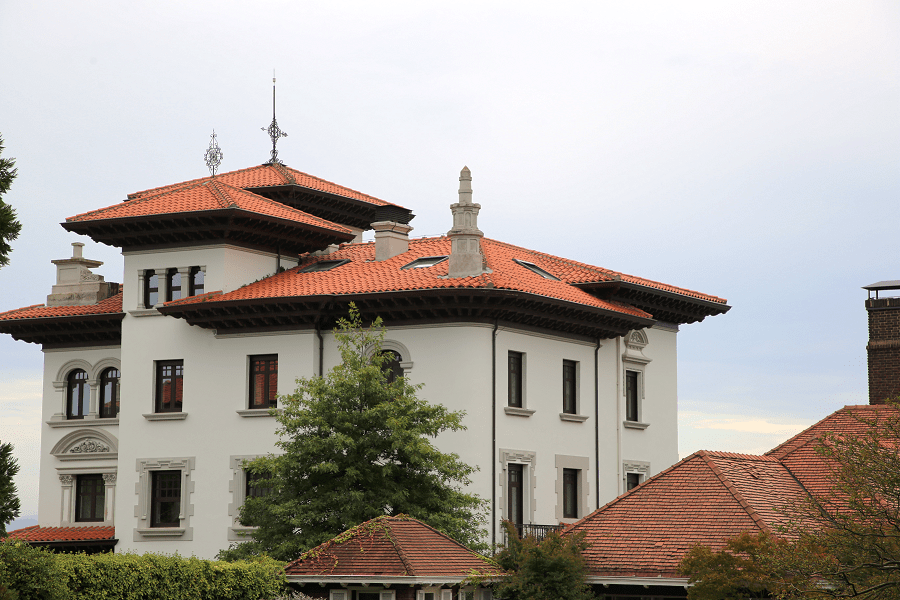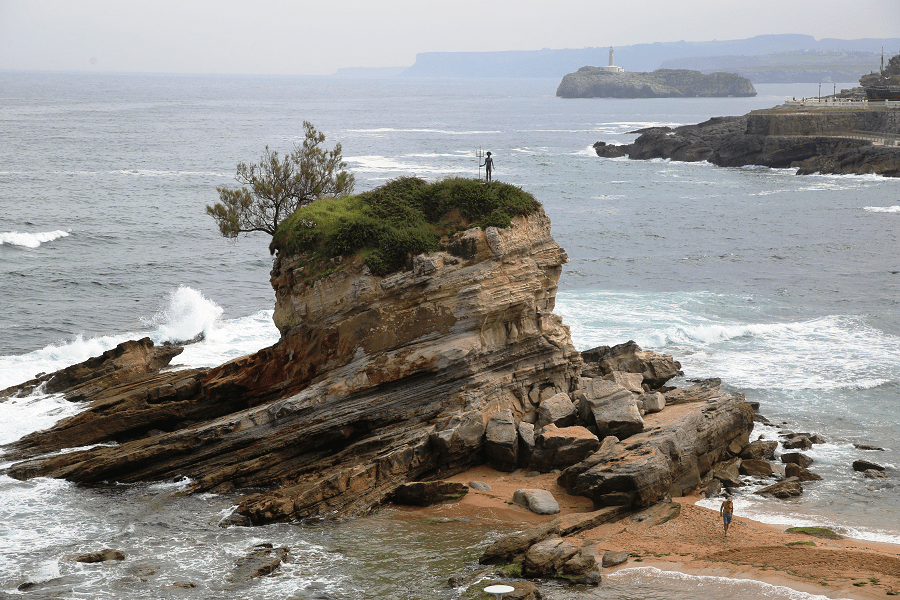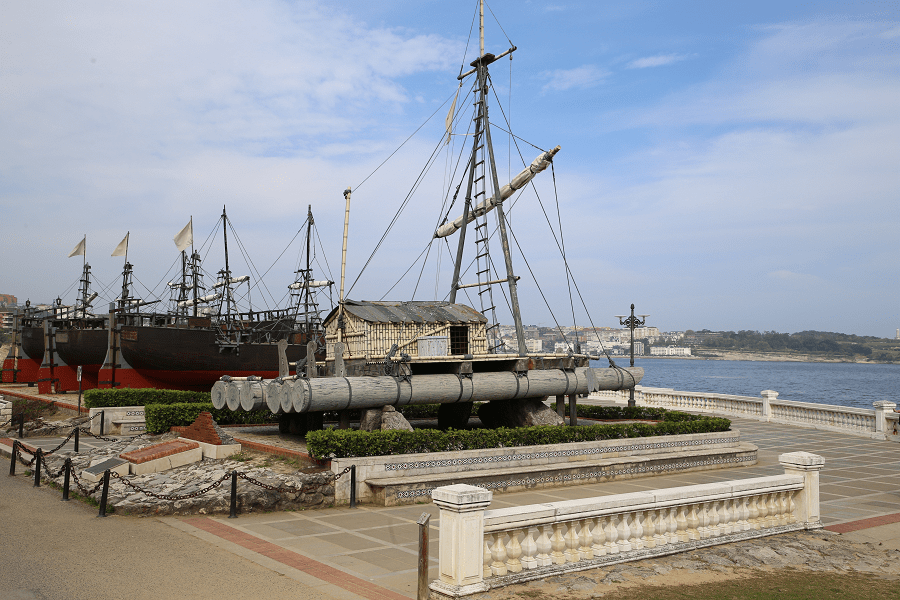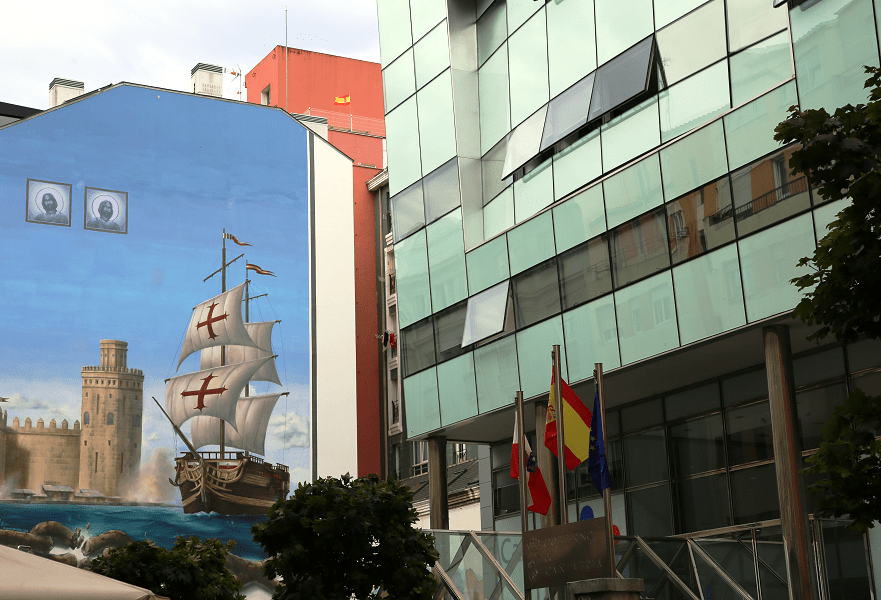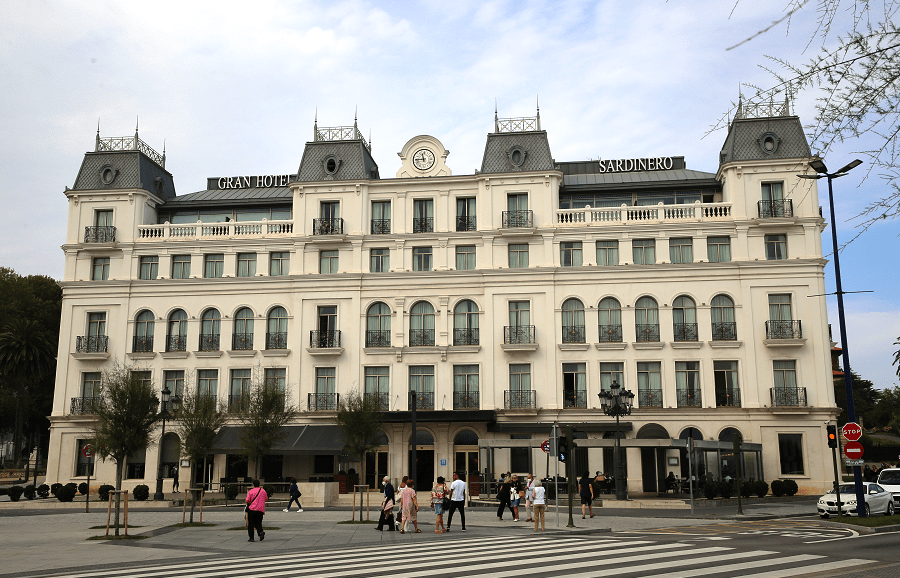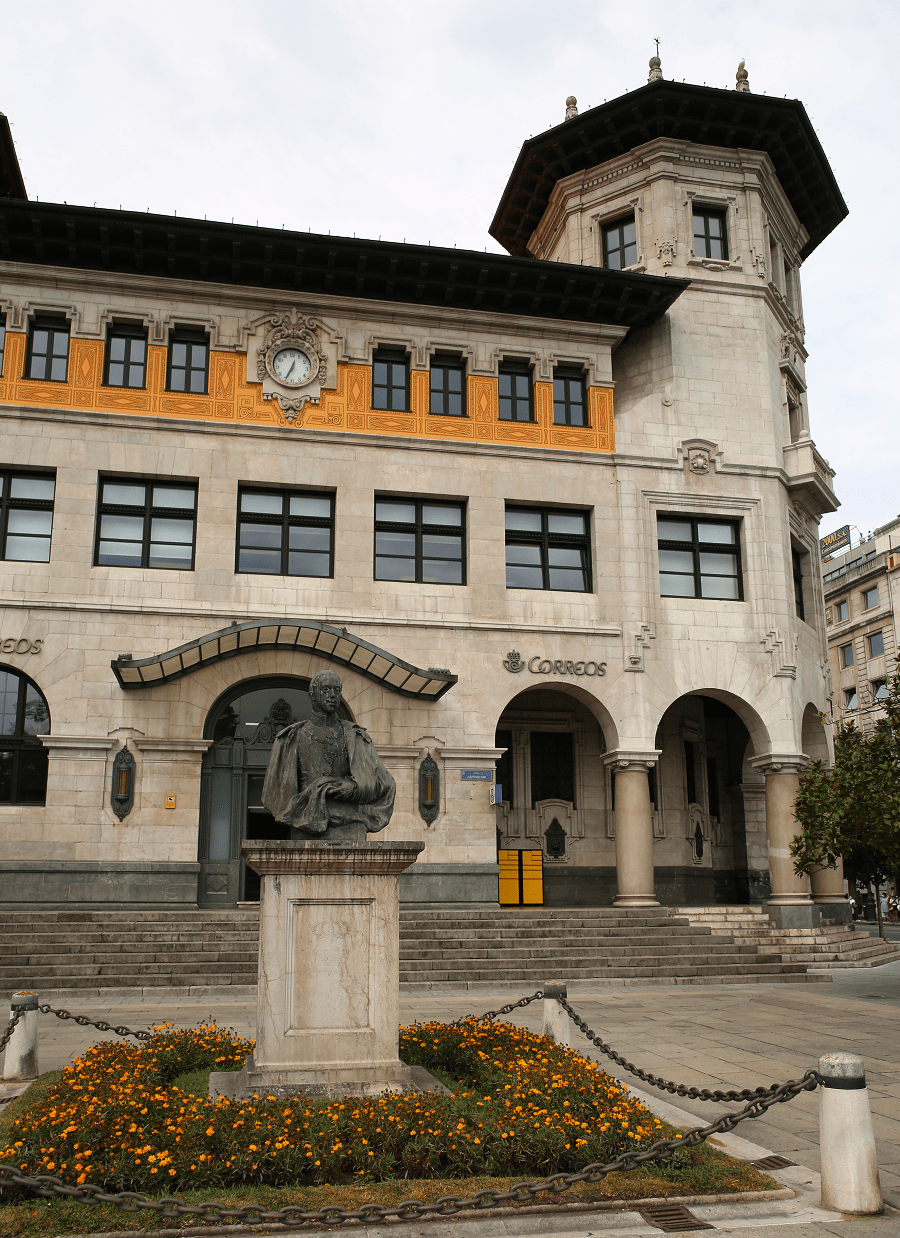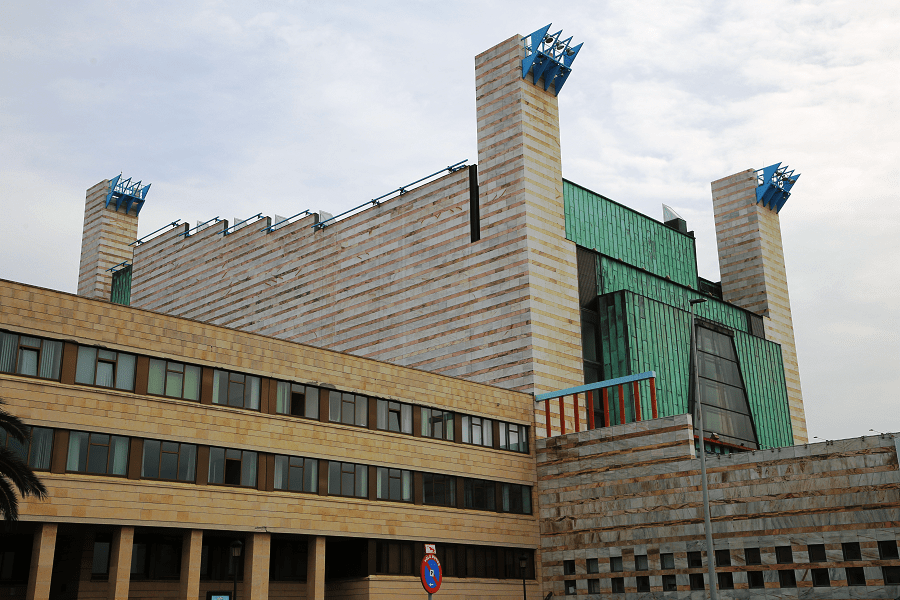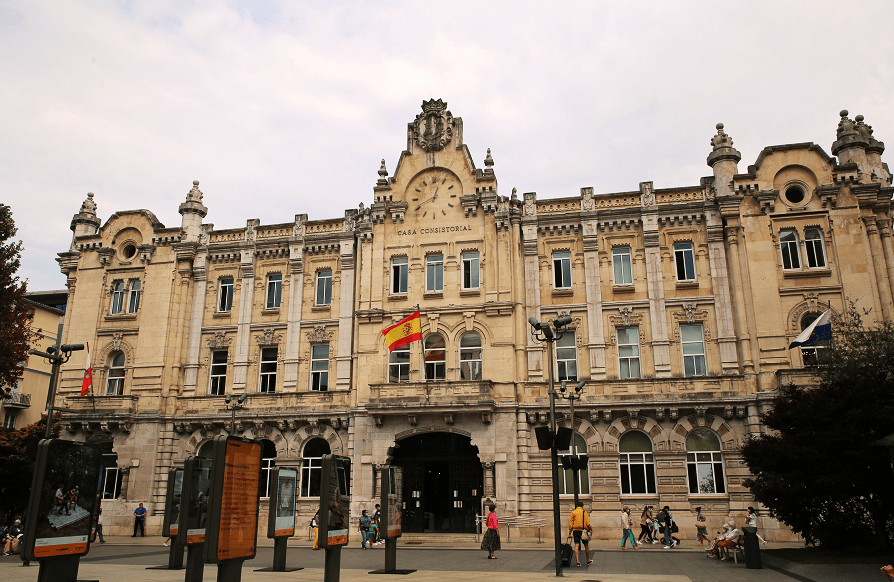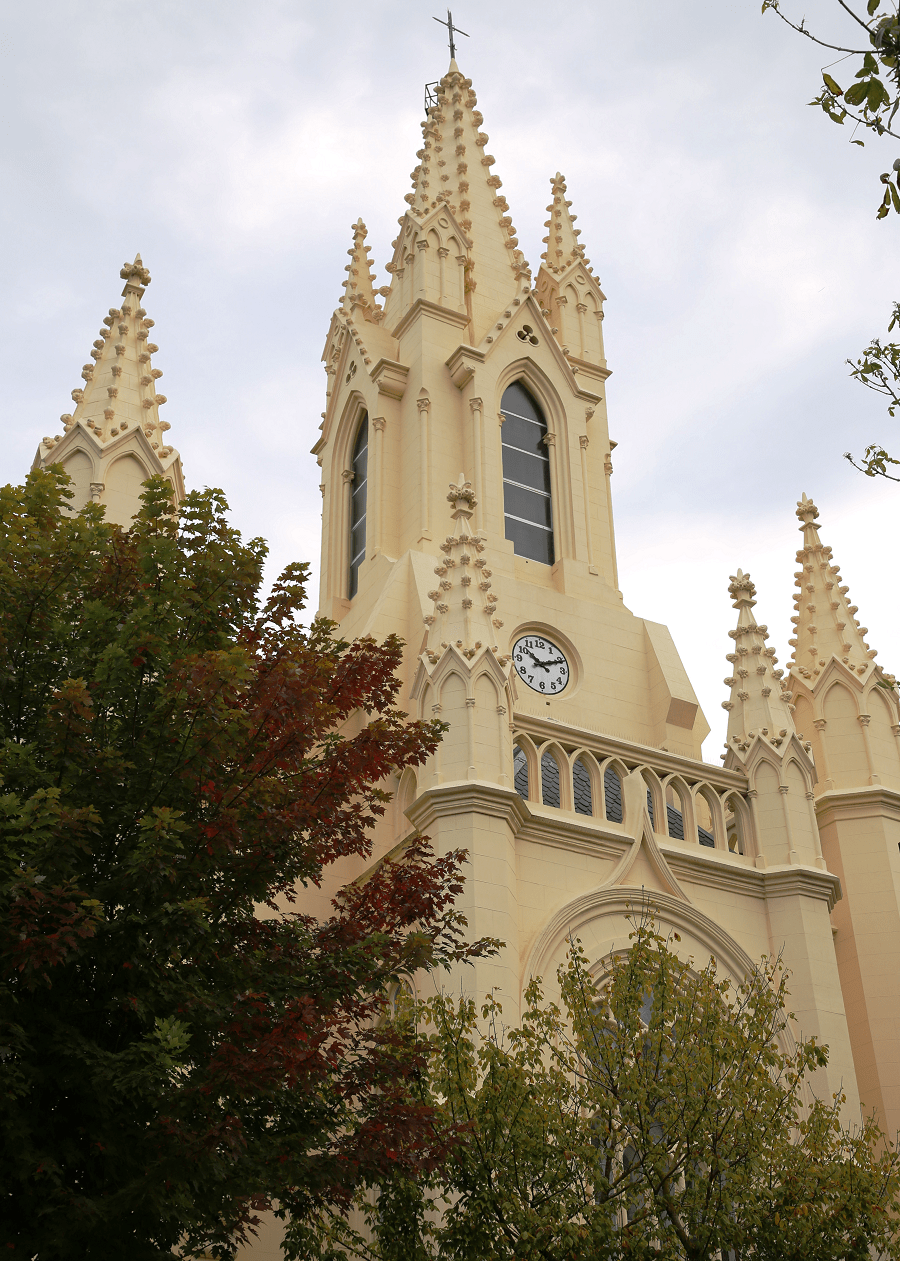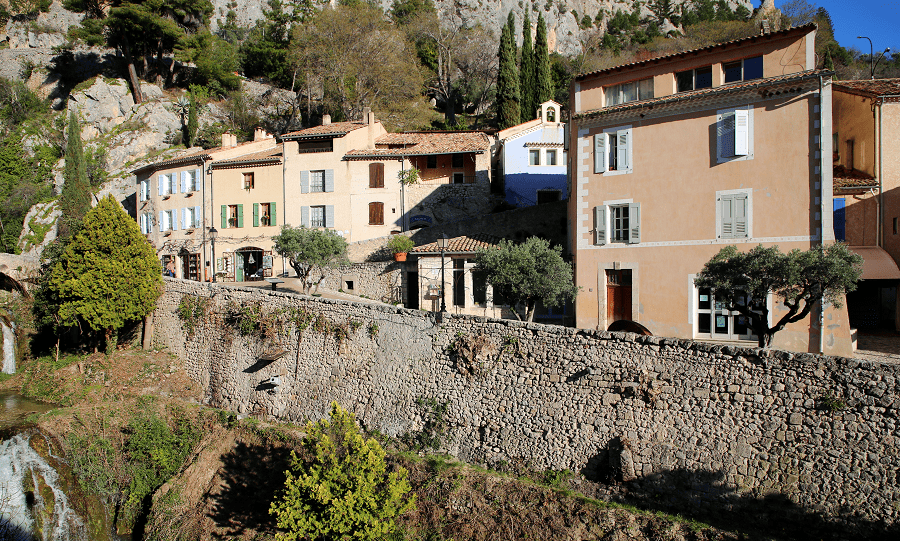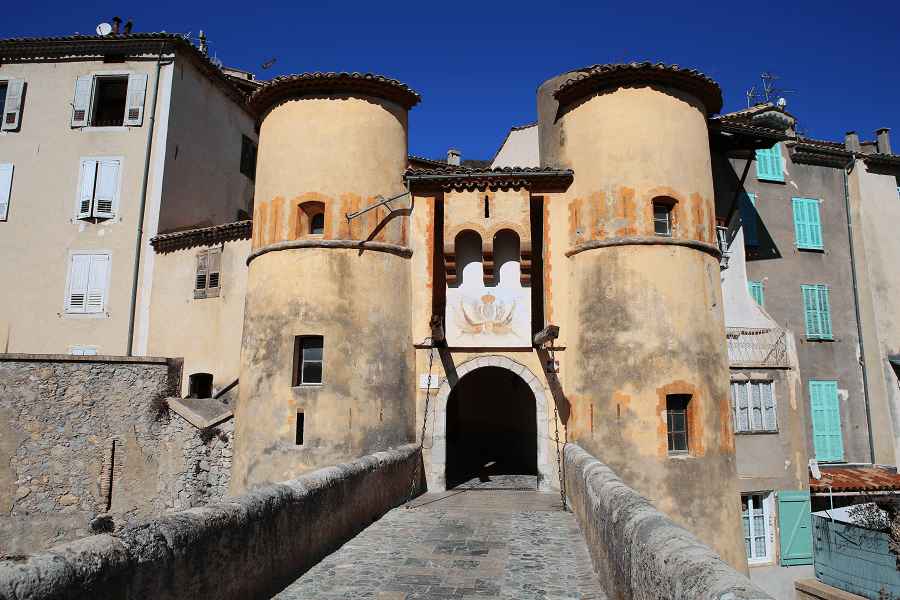Santander is a city located in the north of Spain, capital of the autonomous community of Cantabria. It is the most populous city in the autonomous community.
In addition, it is the capital of the metropolitan area of Santander, a conurbation of more than 300,000 inhabitants that extends around the bay of Santander.
The city is an important part on the Costa Cantabria of the Atlantic resorts of Spain.
It is the provincial capital and also the capital of the northernmost autonomous community in Spain and one of the most important cities in the north of the country. The municipality is bounded on the north by the Bay of Biscay, on the east by the bay of the same name, which also surrounds it on the south by the municipality of Camargo and on the west by the municipality of Santa Cruz de Bezana.
Tourism and main attractions
The Royal Palace of the Magdalena is a building located on the Magdalena Peninsula, in front of the island of Mouro, and was built between 1909 and 1911, by popular subscription, to house the Spanish royal family.
Work of the architects Javier González Riancho and Gonzalo Bringas Vega, it is located in the place where the old fort of San Salvador de Hano was, which protected the entrance to the bay. It cost 700,000 pesetas in 1912 and was paid for by the town hall and a large number of local families. It was furnished in 1913, immediately becoming the summer residence of King Alfonso XIII and his family, who regularly occupied it until the proclamation of the Second Republic. In 1914, the stables were designed by González Riancho, which emulate a medieval English town with pointed roofs with steep slopes, exposed wood frames, etc.
In 1977 Juan de Borbón sold the building to the city for 150 million pesetas. In 1982 it was declared a historical-artistic monument. Between 1993 and 1995 it was rehabilitated by the Santander City Council and the Menéndez Pelayo International University.
Today it is considered one of the most emblematic buildings in Santander and is one of the main tourist enclaves of the city.
Santander Cathedral or Cathedral Basilica of the Assumption of the Virgin Mary of Santander is a historical monumental complex built between the end of the 12th century and the 14th century on top of the former Santander Abbey also known as the “Abbey of the Holy Bodies” (Abadía de los Cuerpos Santos), an old monastery dedicated to Saints Emeterius and Celedonius.
The main portal, constructed around 1230, is of special interest, as it contains the first known carved coat of arms showing lions and castles together, after the final unification of Castile and León in the time of Fernando III, whose son, Sancho, was abbot here.
The church was expanded in the 16th and 17th centuries, incorporating new chapels.
In 1754 the diocese of Santander was created, and the collegiate church was transformed into a cathedral by Pope Benedict XIV, as the seat of the new bishop of Santander.
It suffered considerable damage as a result of the enormous dynamite explosion on the steamship Cabo Machichaco in the harbour in 1893. After surviving the Spanish Civil War, it suffered serious damage in the Santander Fire of 1941, and needed extensive reconstruction and repair from 1942 to 1953, when it was reopened. The architects in charge of this task were José Manuel Bringas and Juan José Resines del Castillo.
The respectful restoration performed on the affected parts today permits the appreciation of the architectural qualities of the original monument.
The church is also a basilica of immemorial memory.
The Museum of Prehistory and Archeology of Cantabria is a museum specializing in prehistoric archeology and also has collections from the ancient and medieval world. It is located in the city of Santander, in Cantabria (Spain).
The museum was created in 1926 by the Provincial Council of Santander, which commissioned its direction and development to Jesús Carballo García. Alfonso XIII attended its inauguration. It had its first headquarters in the building of the Instituto de Santander, now the Instituto Santa Clara, moving in 1941 to the ground floor of the Palacio de la Diputación Provincial, where it had remained until a few years ago.
The Botín Center is an art center dependent on the Botín Foundation. The building was designed by the architect Renzo Piano, being inaugurated on June 23, 2017.
The project was promoted by the Botín Foundation, a private heritage foundation created in 1964 by Marcelino Botín Sanz de Sautuola and his wife, María del Carmen Yllera Camino.
The building, made up of two volumes of different sizes supported on columns and partially suspended over the sea, was the work of the Italian architect Renzo Piano, who was awarded the Pritzker Prize in 1998.
The Museum of Modern and Contemporary Art of Santander and Cantabria (MAS) is an art collection founded in 1909, it is the main art museum in the region, with a remarkable collection of paintings and sculptures from the 15th to the 20th centuries, from the Italian, Flemish and Spanish schools (the latter with a significant presence of Cantabrian artists).
Until 2011 it was known as the Municipal Museum of Fine Arts of Santander.
Perhaps the most famous of its works is the portrait that Francisco de Goya painted, around 1814, of King Fernando VII by order of the councilor of the Municipal Council of Santander.
The Riva-Herrera or Pronillo Palace is located in the Pronillo district of the city. The complex made up of the tower, the walls and the monumental complex of the noble house is declared a Cultural Asset. The enclosure, of about 2000 square meters, has the original building, a tower of the Middle Ages called “tower of Pronillo” to which in the sixteenth century was attached a house with a stately tower, manor house, chapel. It is the oldest civil construction in the city.
The Library and House-Museum of Marcelino Menéndez Pelayo is a library of around 42,000 volumes belonged in its lifetime to the famous writer, passed after his death to the city council of Santander by testamentary decision.
Its bibliographic collection consists of 1,032 manuscripts, papers and correspondence from 17 legacies by different authors, and 42,500 printed titles, of which 22 are incunabula (15th century), 124 from the 16th century and 1,225 from the 17th century. The eighteenth century is represented by 2,839 titles and the nineteenth and twentieth by 35,260. To all this should be added 870 titles of periodicals.
The convent of the Madres Clarisas de Santa Cruz is a building declared of Cultural Interest. The convent was inhabited from the beginning by nuns of the Claretian clergy, until in the middle of the 19th century it was transformed into a tobacco factory. With the transfer of production to a new factory in Entrambasaguas in 2002, the building has become obsolete, although it is expected to become the courthouse.
The old Hospital de San Rafael was originally an asylum, hospice and maternity or poor home, to finally become a clinical care center of importance for the city of Santander during the nineteenth and early twentieth centuries. Its foundation in 1791 is linked to the action of Bishop Menéndez de Luarca. With the beginning of the activity of the Casa de Salud Valdecilla, the hospital of San Rafael would close its doors definitively. The Cantabrian Parliament is currently located in the building, on Calle Alta (Cabildo de Arriba neighborhood).
The Eastern Market, also popularly known as Plaza del Este, is an old market currently occupied by various shops and hotels.
The construction of the new Santander market was promoted in 1839 by the mayor of Santander, José María López-Dóriga, designed by the municipal architect Antonio Zabaleta.
This market is considered one of the first examples of “galleries” built in Spain for commercial use.
The seminary of Monte Corbán, formerly a monastery, was built around the hermitage of Santa Catalina de Monte Corbán.
The main baroque façade was built in the 17th century, and at the end of the 18th century the extension works were completed with the new cloister and the main staircase.
Paseo de Pereda is an extensive street located in the city center, it houses a long walk parallel to the pier line, and reaches Puertochico. The whole of Santander Bay can be seen along it.
The church of San Francisco is a Catholic, apostolic and Roman temple, eclectic (mainly Herrerian), located at No. 9 Calle de los Escalantes. It is the work of the Santander architect Javier González Riancho, one of the most prestigious architects in Cantabria, who designed it in the middle of the twentieth century after winning the 1940 project competition, being inaugurated in 1953. It belongs to the bishopric of Santander, and is included in the lists of the artistic-religious patrimony of Cantabria.
Corbanera Castle is a military fortification built in 1874 in the area of Corbanera, La Maruca, in Monte. It was the main defensive element of the line of walls, fortifications and batteries built to protect the city from possible Carlist attacks during the Third Carlist War (1872-1876). It is a monument declared of Cultural Interest.
Festivals
Santander is a city of many festivals and pilgrimages, distributed throughout the various neighborhoods and areas of the city. Mention the existence of many local festivities, such as those of Mendicoague, Perines, etc. The most well-known festivals in Santander and those with the most tourist attraction are the following:
January 5: The procession of the Three Wise Men travels through a small part of the city, from the Palace of Festivals to the Town Hall Square.
The first Sunday in June: Cantabria Children’s Day is celebrated in La Magdalena. It is a Festival of Regional Tourist Interest, of exaltation of the native thing, organized by the “Association for the Defense of the Interests of Cantabria” (ADIC), association founded by Miguel Ángel Revilla. This festival includes many other things, an exhibition of aluche (old Cantabrian wrestling) and rural sports such as dairy racing, jumping and cutting logs.
Pentecost Monday: Feast of the Virgin of the Sea.
June 24: The bonfire of San Juan is celebrated in El Sardinero. This festival celebrates the arrival of summer with a large bonfire and a pilgrimage. In other parts of the municipality, bonfires are also made, such as in Albericia and in the Barrio Pesquero.
July 25: Fiestas de Santiago (Fiesta of Regional Tourist Interest).
August 30: Feast of the Holy Martyrs (St. Emeterius and St. Celedonius). Patrons of Santander.
September 15: Feasts of the Virgin of the Good Apparent Patroness of the Diocese of Santander and Cantabria (Feast of Regional Tourist Interest).
Sea Festival: held every four / five years.
Beaches
It has 13 beaches in total:
- Virgen del Mar beach
- Maruca Beach
- Bocal Beach
- Rosamunda beach
- Mataleñas beach
- Molinucos Beach
- Beaches of El Sardinero
- The First beach
- The Second beach
- La Concha beach
- El Camello beach
- Bikini Beach
- La Magdalena beach
- Los Peligros beach
Cuisine and restaurants
Santander’s cuisine is characteristic of Cantabria in that it is based mainly on seafood. Popular shellfish include almejas (clams) and navajas (razor clams); fish include seabream, red mullet, anchovies, seabass and sardines; and squid and cuttlefish are also commonly eaten.
Some typical dishes from the city of Santander are the fried calamari called rabas, double donuts, bean stew called cocido montañés, and seafood dishes ranging from seabass and sardine to products such as morguera.
There are 17 Michelin list restaurants in the city:
- El Serbal, Avenida de Manuel García Lago 1, 54 – 78 EUR • Modern Cuisine (one star)
- Casona del Judío, Repuente 20, 70 – 82 EUR • Modern Cuisine (one star)
- La Hermosa de Alba, Tetuán 34, 25 – 50 EUR • Fusion
- La Caseta de Bombas, Gamazo, 35 – 55 EUR • Market Cuisine, Barbecue
- Asador Lechazo Aranda, Tetuán 15, 35 – 47 EUR • Meat and Grills
- Querida Margarita, Andrés del Río 7, 20 EUR • Fusion, Traditional Cuisine
- La Mulata, Andrés del Río 7, 40 – 65 EUR • Seafood
- Del Puerto, Hernán Cortés 63, 50 – 90 EUR • Seafood
- Casa Lita, Paseo de Pereda 37, Traditional Cuisine
- La Bombi, Casimiro Sáinz 15, 50 – 80 EUR • Market Cuisine
- Daría, Bonifaz 19, 30 – 45 EUR • Modern Cuisine
- Umma, Sol 47, 33 – 45 EUR • Modern Cuisine
- Bodega Cigaleña, Daoiz y Velarde 19, 40 – 55 EUR • Traditional Cuisine
- Cadelo, Santa Lucía 33, 32 – 42 EUR • Modern Cuisine
- Cañadío, Gómez Oreña 15, 40 – 55 EUR • Traditional Cuisine
- Agua Salada, San Simón 2, 35 – 45 EUR • Contemporary Cuisine
- Bodega del Riojano, Rio de la Pila 5, 35 – 50 EUR • Traditional Cuisine
Shopping
Santander’s shopping district is in its centre. The streets around the City Hall – Artigas, Juan Herrera, Burgos and Cubo, for example, are good for everything from clothes to shoes and to sportswear, as are Vargas and San Fernando. For boutiques – the Avenida de Calvo Sotelo.
There are two large commercial centers in Santander, both located a short drive out of town – Valle Real and the well-known Spanish department store El Corte Ingles.
Transport and how to get to?
By air:
The city is served by the Seve Ballesteros–Santander Airport (SDR), located four kilometres south of the city centre. It is an international airport and the only airport in Cantabria.
By sea:
There are ferry services to and from Portsmouth and Plymouth in the United Kingdom and Cork in Ireland, all operated by Brittany Ferries.
By train
Santander railway station serves three million annual passengers.
Distance by car to other capital cities of Spain:
From Madrid 4 hr 32 min (455 km) via A-67
From Santiago de Compostela 4 hr 50 min (491 km) via A-8
From Logroño 2 hr 28 min (234 km) via AP-68 and A-8
From Oviedo 2 hr 7 min (194 km) via A-8
From Vitoria-Gasteiz 1 hr 56 min (162 km) via A-8
From Pamplona 2 hr 45 min (253 km) via A-8
From Zaragoza 3 hr 59 min (401 km) via AP-68
From Barcelona 7 hr 6 min (705 km) via AP-2 and AP-68
From Valladolid 2 hr 36 min (248 km) via A-67
From Toledo 5 hr 6 min (522 km) via A-67
From Valencia 7 hr 12 min (710 km) via A-23 and AP-68
From Mérida 6 hr 5 min (637 km) via A-66 and A-67
From Murcia 8 hr 2 min (840 km) via A-1
From Seville 8 hr 15 min (830 km) via A-66
Main information
Area: 36 km²
Coordinates: 43°28′00″N 3°48′00″W
Population: 172 221
Languages: Spanish
Currency: Euro
Visa: Schengen
Time: Central European UTC +1
See here best sea and ocean resorts of France and Spain (223 objects)





